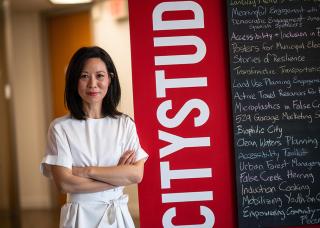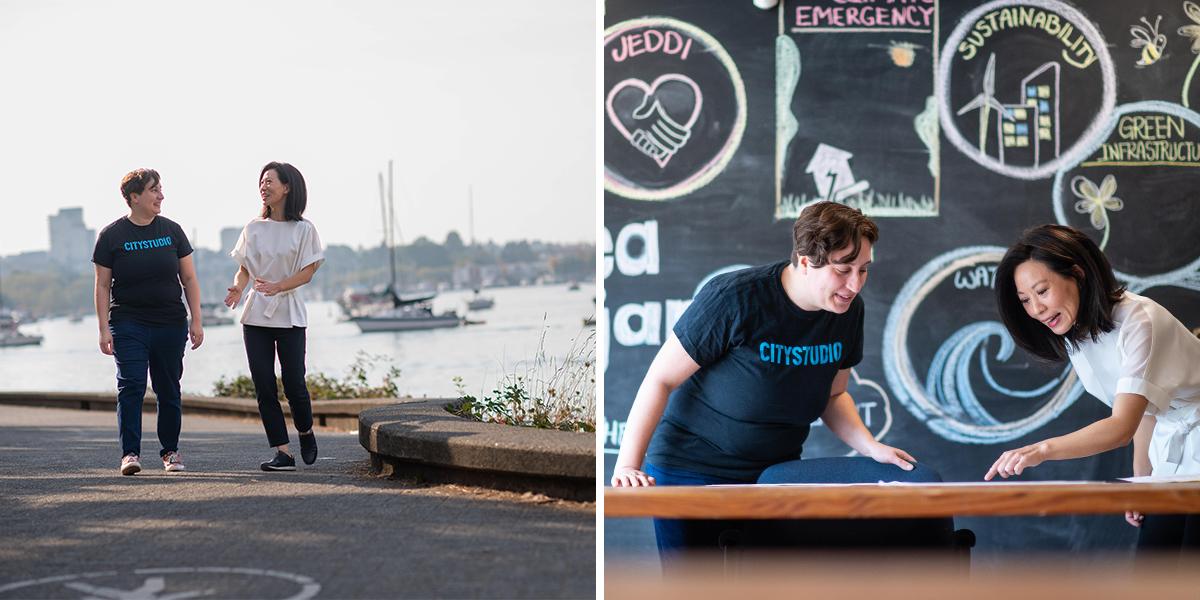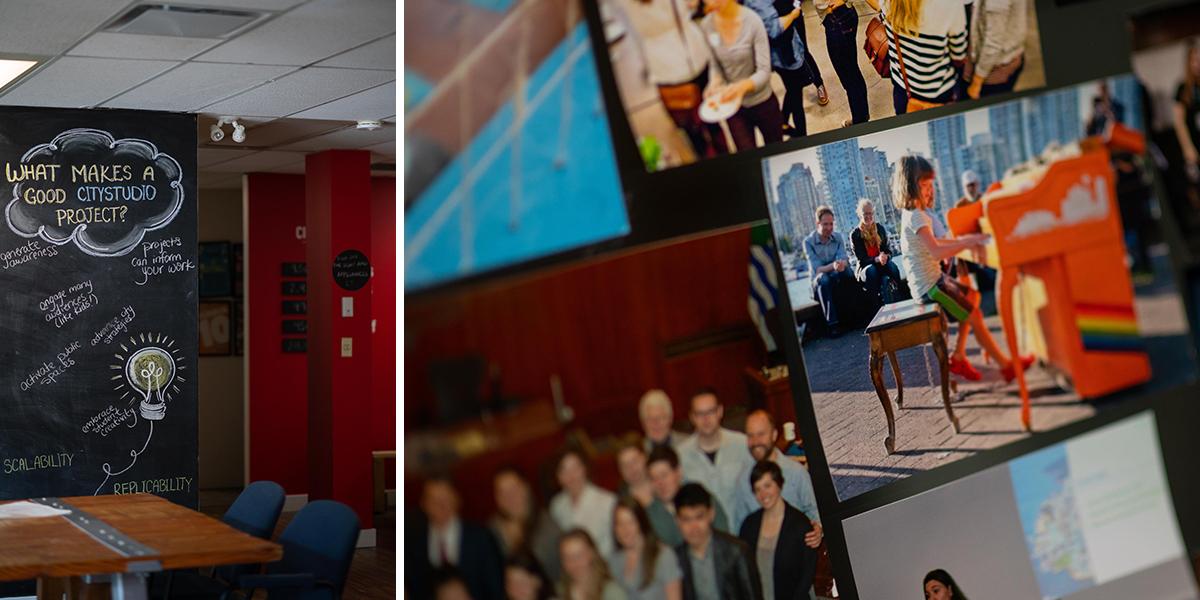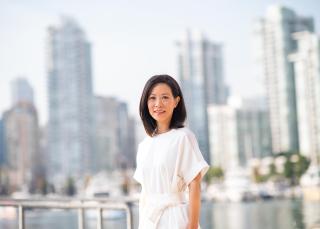Co-creating a future beyond the classroom
How Dr. Su-Jan Yeo emboldens students to turn urban planning ideas into real-world outcomes

How Dr. Su-Jan Yeo emboldens students to turn urban planning ideas into real-world outcomes

In spring of 2022, we asked our teaching faculty to tell us who among them were offering innovative learning experiences, environments, and/or introducing new ways of overcoming barriers in their classes. This is the final story in a six-part series recognizing teaching faculty at UBC.
While wandering around a city, have you ever wondered how public benches are positioned perfectly to enjoy a majestic view, or who cleverly placed a picnic table within helpful reach of a power source? While much of urban planning can remain conceptual in the classroom, Dr. Su-Jan Yeo is changing the learning game—she is helping students understand how to transform the urban environment and shape their community with a hands-on learning experience that has real-world impact.
As part of this approach, Su-Jan uses the innovative concept of an ‘Ideathon’ with her students—where interdisciplinary teams participate in a design challenge premised on real-world urban planning issues. Simply put, students are presented with a site-specific issue and invited to generate novel ideas within a defined timeframe. These ideas are shared with urban planning professionals, enabling students to influence local projects and see their impact beyond the classroom.
“I’ve always had a fascination for the urban environment, ever since I was a young child. As a course instructor, I want to share that sense of fascination with students and I try to do so by creating a unique experience where learning can come to life,” Su-Jan explains. With support from the Scholarship of Teaching and Learning (SoTL) Seed Program, Su-Jan created the Ideathon, to help students understand how they can transform an idea into a reality. Students are given a project brief and tasked with analyzing the site, conceptualizing solutions, developing a vision, and proposing steps to implement their collective ideas.
Su-Jan’s Ideathon concept was inspired by hackathons (software design competitions), which became popular in the tech industry in the late 2000s. She watched as teams of computer programmers, user experience designers, and product managers worked together to find creative solutions. It made her wonder, how might this work in a classroom setting?
“I was so determined to incorporate a hackathon-like challenge in the course curriculum. Hackathons draw on the strength of collaboration and teamwork,” Su-Jan explains. “In urban planning, good outcomes are almost always the result of effective engagement and positive partnerships.”
By integrating an Ideathon in the course curriculum, Su-Jan encourages her students to apply urban planning theories and concepts while observing, through hands-on experience, the importance of collaboration at all stages of the planning process.
"In urban planning, good outcomes are almost always the result of effective engagement and positive partnerships."
Dr. Su-Jan Yeo, Sessional Lecturer in the School of Community and Regional Planning, Faculty of Applied Science

What makes Su-Jan’s approach unique is that she collaborates closely with urban planning professionals to identify active projects across the City and to scope the projects appropriately for student learning.
“Ideathon themes change from year to year,” Su-Jan explains. "Students contribute to current projects and urban planning challenges.” For example, past Ideathon challenges have prompted students to investigate practical ways to turn laneways into safe and vibrant public spaces (in the Mount Pleasant neighbourhood), and to reimagine transportation paths as gathering places for residents and other groups (in the Arbutus Greenway).
“Throughout the course, I also want students to gain experience interacting with urban planning professionals, whether it is in the classroom or on-site,” she continues. Students present their ideas to a panel of judges comprising professional planners from the City or private sector, entrepreneurs, and independent artists or designers. Some students bring their ideas beyond the classroom and share their work at a public showcase hosted by CityStudio and the City of Vancouver.
“This approach really solidifies our university-city link. The university is not an isolated bubble, operating in its own ideal world,” Su-Jan continues. “We have a responsibility, as part of a larger community, to extend our teaching and research activities into areas where they can be of service and make real-world impact.”
“The university is not an isolated bubble, operating in its own ideal world. We have a responsibility, as part of a larger community, to extend our teaching and research activities into areas where they can be of service and make real-world impact.”
Dr. Su-Jan Yeo, Sessional Lecturer in the School of Community and Regional Planning, Faculty of Applied Science


As part of the Ideathon, Su-Jan matches students with their peers from other disciplines and Faculties. Together, they find innovative solutions for current City projects, break down barriers and share ideas and possibilities. Drawing on the strength of their diverse backgrounds, students are given significant latitude to imagine how cities can be made for all.
Many students who enrol in this course already have an interest in cities or have some knowledge about urban planning—but there is often a segment of the cohort that is completely new to this field, who come from disciplines like computer science, neuroscience, oceanography, mechanical engineering, history and visual art. “That’s where I’ve become absolutely amazed. Students always surprise me with ideas I never would have considered, beyond what I could’ve imagined.” Su-Jan explains. “Because their teams are interdisciplinary, it results in high levels of creativity and integrated thinking. There’s really no boundary when you’re collaborating across different disciplines and domains—engaging in multiple ways of seeing things is the modus operandi.”
By involving students in real-world planning projects, Su-Jan’s innovative teaching approach helps them appreciate how active civic participation can play a role in shaping the future of their communities. Su-Jan’s hope is that her course motivates students to “realize and embrace their potential as key partners in planning better for a brighter tomorrow.”
Written by Alpha Lam, UBC Internal Communications
October 2022
Accounting. Marketing. Leadership. Lego? How UBC Sauder’s Dr. Kari Marken challenges her Creativity students with purposeful play (Sept. 20)
Science at the crossroads of creativity and ethics: Dr. Robin Young looks at cell biology through a lens of ethics, diversity and inclusion (Sept. 26)
Necessity is the mother of a delicious invention: Gerry Kasten and Joel Barohn are breaking down barriers and redefining how students learn to cook at UBC (Oct. 3)
A ‘quiet rumbling’ that led to a visible focus on student humanity: How Katie Lee Bunting’s shift towards values-based teaching transcends the confines of traditional thinking (Oct. 11)
Making the case for open access law texts: Dr. Samuel Beswick has created Canada’s first open-access tort law casebook (Oct. 17)
Find the latest news, updates, events, and useful dates from across UBC, curated for faculty and staff by Internal Communications.
Access a library of resources from multiple UBC websites, all in one place.